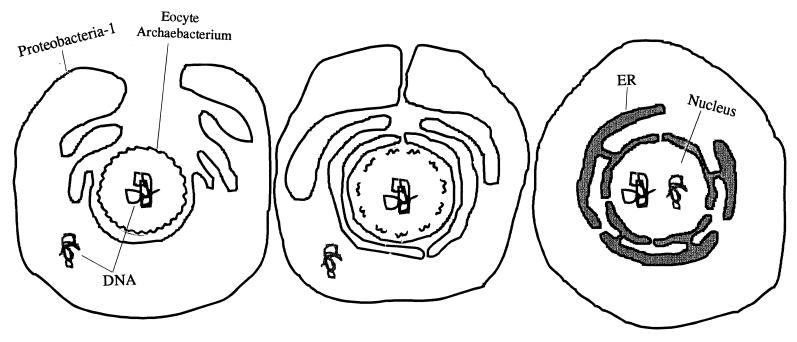FIG. 32.
Origin of the eukaryotic cell nucleus and endomembrane system as per the chimeric model. The key event in the origin of the eukaryotic cell is postulated to be a symbiotic association between a gram-negative eubacterium (from the proteobacteria-1 group) and likely an “eocyte” archaebacterium. This association led to the loss of the outer membrane from the gram-negative bacterium (not shown). As the membrane of the gram-negative bacterium surrounded the eocyte species, the membrane of the latter species, containing ether-linked lipids (wavy line), became redundant and was lost. Eventual separation of the membrane infolds led to the formation of the nuclear envelope and ER. The formation of these new compartments was preceded or accompanied by duplication of the genes for the chaperone proteins (Hsp70, Hsp90, DnaJ, etc.), which are necessary for protein transport and communication within the compartments. The transfer of the genome from the gram-negative eubacterium to the newly formed nucleus and an assortment and integration of genes from the two partners led to the formation of the ancestral eukaryotic cell. Modified and reproduced from reference 105 with permission of the publisher.

